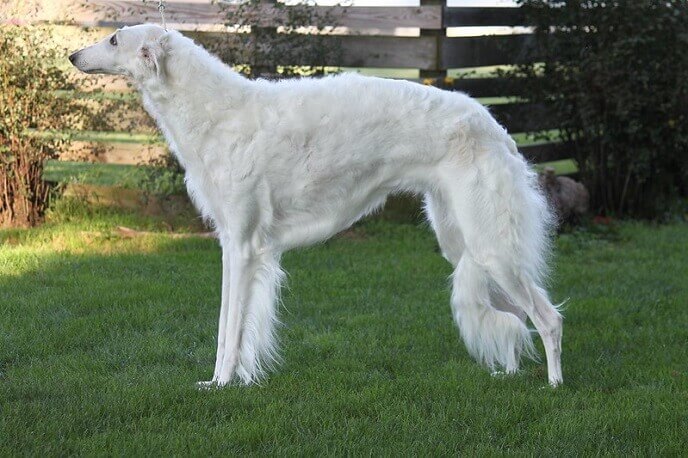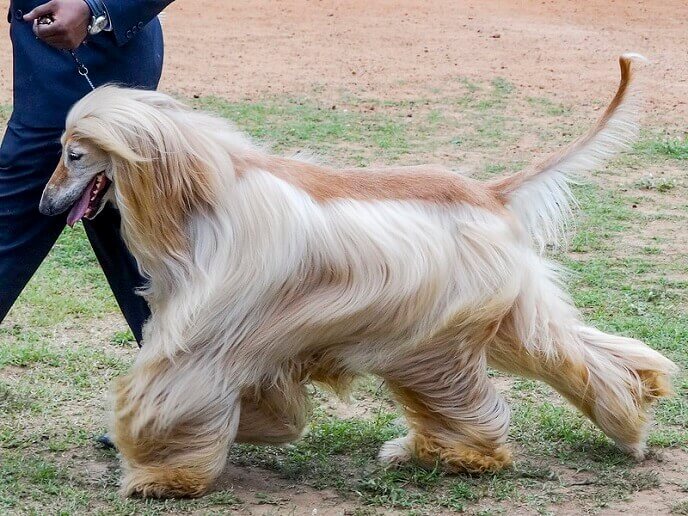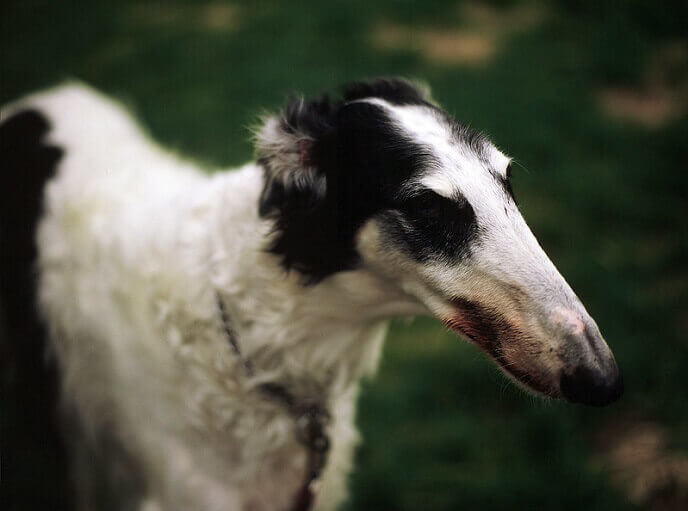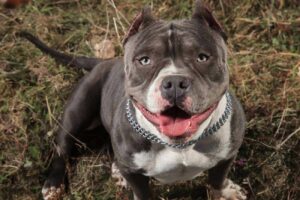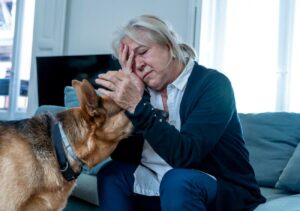When most people think of big dogs, one of the last things they imagine is that they can be quiet dogs, or that they might be able to get through the day - and their home - without leaving a trail of discarded fur behind them.
Big dog = big mess, right?
Don’t All Big Dogs Shed and Bark a Lot?
Size and noise level are not always related when it comes to dogs, and the same is true of shedding.
Some large dog breeds don't really do much of either, and some are even downright hard to notice at times (except for their size, of course).
You might think that if a pet parent wants to welcome a larger dog breed into their family, then they will have to be ready for barking and shedding aplenty.
And as keeping a large dog in a small apartment is not always a good idea - for either the dog or the humans that live there and their furniture - some may prefer a quieter, lower energy big dog to keep them company.
If that sounds like you, then read on, as here we are going to introduce you to some pretty awesome large breed dogs that don't shed or bark.
That is, don't shed or bark much, as there really is no such thing as a pup that is totally silent and does not ever shed their fur.
Here are 10 popular large dog breeds that don't shed or bark.
1. Akita
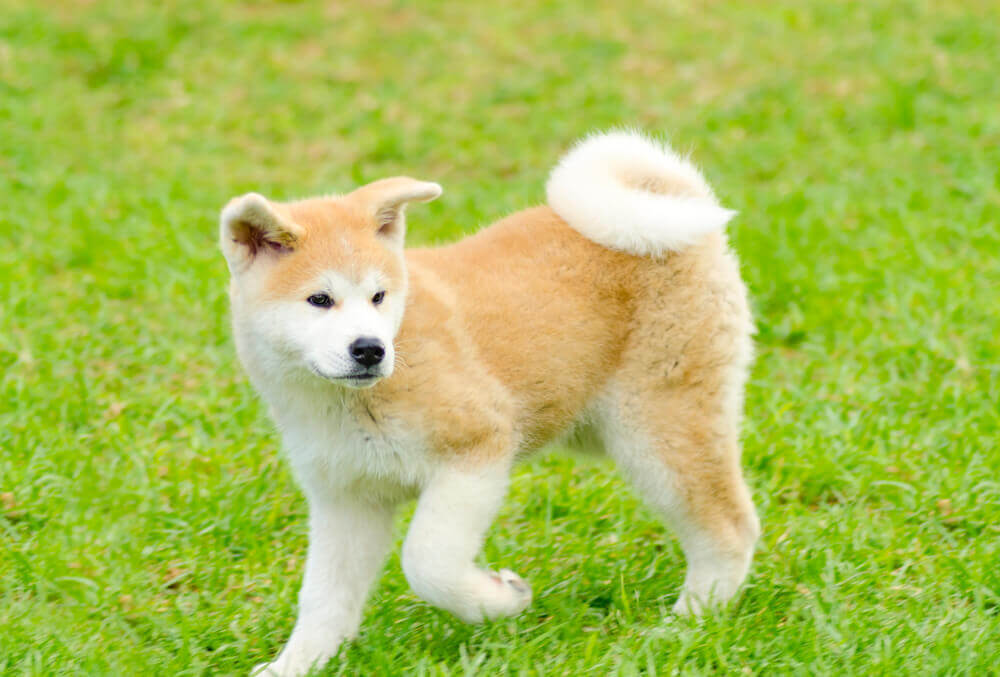
The Akita was originally bred, many centuries ago, in Northern Japan, as a hunting dog who would be capable of tracking, and helping to bring down, larger prey like deer, elk and even black bears.
They were (are?) very good at this, which means they also know how to stay poised and quiet for long periods of time.
An Akita who is a family pet will rarely bark excessively, with the exception of a situation in which he feels a pack member - which is how he sees his human family - is in imminent danger.
An Akita's loyalty to his owners is near legendary.
In terms of shedding, Akitas will shed their short, wiry fur minimally for most of the year, but will 'drop' their coat twice a year, once in the spring, once in the fall.
You can stop this from leading to too much mess in your home by having a groomer strip out their undercoat, and maybe even showing you how to do it too.
2. Dalmation
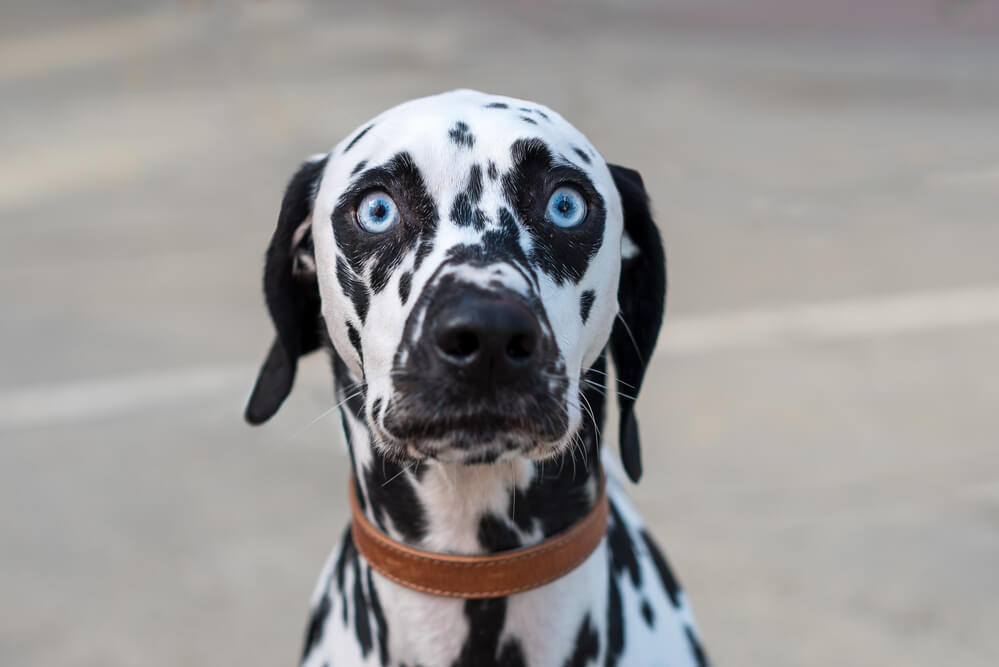
Most people who are not too familiar with them only really know one thing about dalmatians: they have lots of spots.
Their distinctive colors - usually just black and white - and patterning - aside dalmatians are also very quiet dogs, with most only barking rarely.
They are not completely silent, but if they want your attention, they are more likely to try to get it with a paw rather than a big woof!
As short haired pups, Dalmatians do not shed a lot either, and require a lot less grooming than many other large dogs. What they do need - and love - a lot of though is exercise.
Their ancestors were bred to work as carriage dogs - dogs who walked miles at the side of royal coaches and gypsy caravans - so their love of a good long walk, hike or run is one their pet parents should be willing to indulge often.
3. Afghan Hound
Afghan hounds were first utilized by nomadic tribes in Afghanistan to track down hare and gazelle through steep, hilly terrain. In addition to being very swift, they are also very nimble and superb jumpers.
They are also quiet - any good hunter has to be good at their job - and rarely bark unless they feel threatened or that their family is in danger.
For such large dogs, Afghan Hounds move with a great deal of grace, and while not the most affectionate dogs, they are very loyal and happy to sit quietly at home once their daily exercise needs are met.
Given that their long silky fur is one of their defining traits, it surprises people to learn that they are considered, even by the AKC, to be low shedding dogs.
Pet parents still have to be willing to put in some serious grooming time, though, as without it that long fur mats and tangles fast.
4. Collie
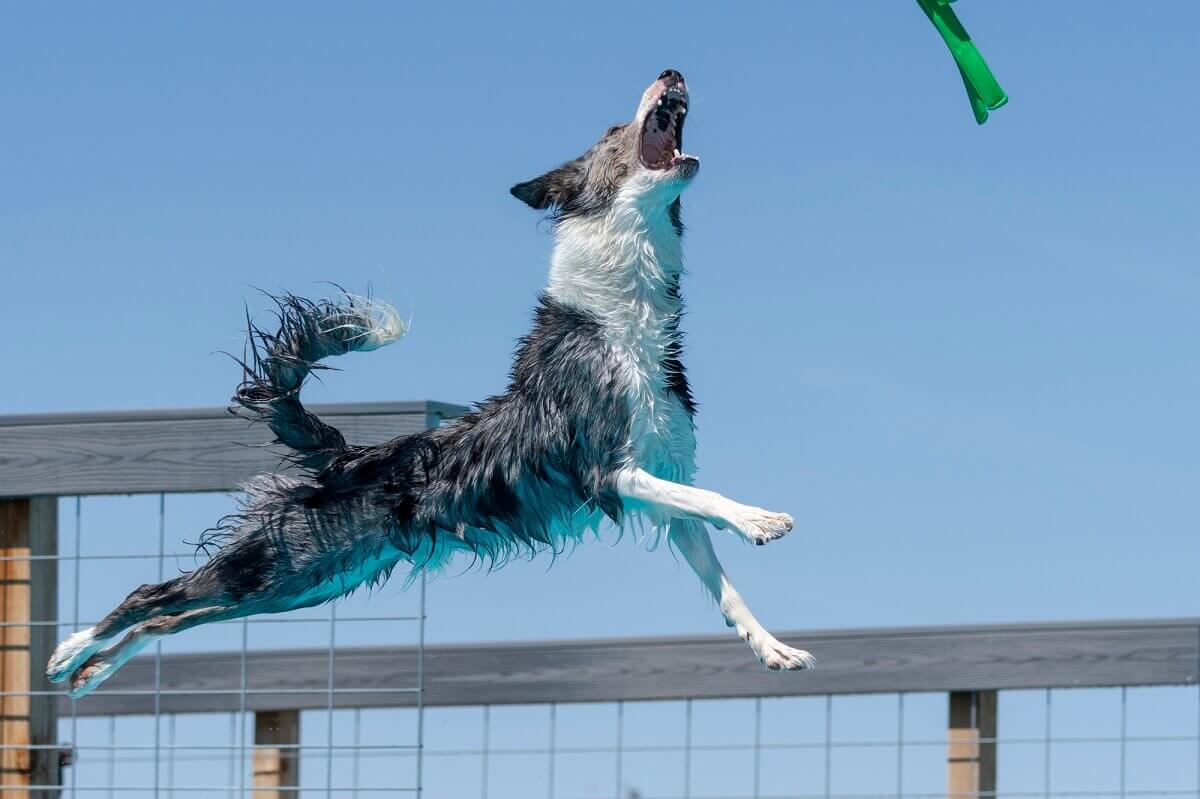
Collies bark right? After all, Lassie did.
However, if you think back, Lassie only barked when they had something important to say - like Timmy was in trouble AGAIN - and that is true of these very intelligent dogs in general.
As some of the best shepherd dogs in the world, they have to know when to be quiet, and usually won't bark excessively for no reason.
Although they have longer coats, Collies are not big shedders either. They do require regular brushing to keep their fur tangle free, but they don't 'drop' a lot of it between grooming sessions.
5. Australian Cattle Dog
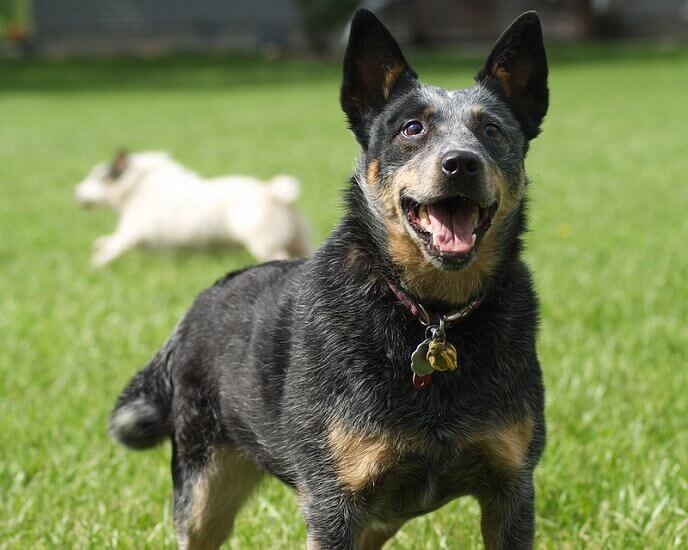
via flickr/9258photo
The Australian Cattle Dog has a breed history that is as complicated as the history of its homeland itself, having been 'created' as a result of breeding a dog called a Smithfield, imported by the British Navy on landing there with the native dingo to produce a working dog who could herding tasks in some very rough terrain.
As herders, Australian Cattle Dogs instinctively bark sparingly and are usually quiet at home.
They do tend to extend their herding instincts to other animals in their home, though, so that's something you'll need to keep in mind!
In terms of shedding, the Australian Cattle Dog has a short, wiry coat that they only shed twice a year.
To avoid a large 'blowout' of fur at these times, the 'dead' coat can be stripped out by a groomer as soon as shedding season begins.
6. Saluki
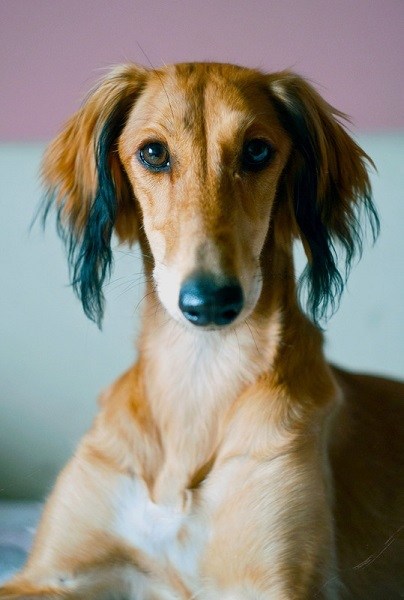
The Saluki, which is part of the greyhound family, is a sleek, silky eared pup with a very short coat that sheds little.
They are fast and graceful, and were used as elite hunters by no less than Alexander the Great.
They are also calm and loyal, and usually very quiet, rarely barking or making much of a fuss at all.
While they do not shed a lot, pet parents do need to pay careful attention both to the long fur on their ears - to prevent tangles - and to the ears themselves, which can be prone to infection if not kept clean.
Their skin is also often sensitive, so choosing a dog food considered good for the skin is a good idea as well.
7. Rhodesian Ridgeback
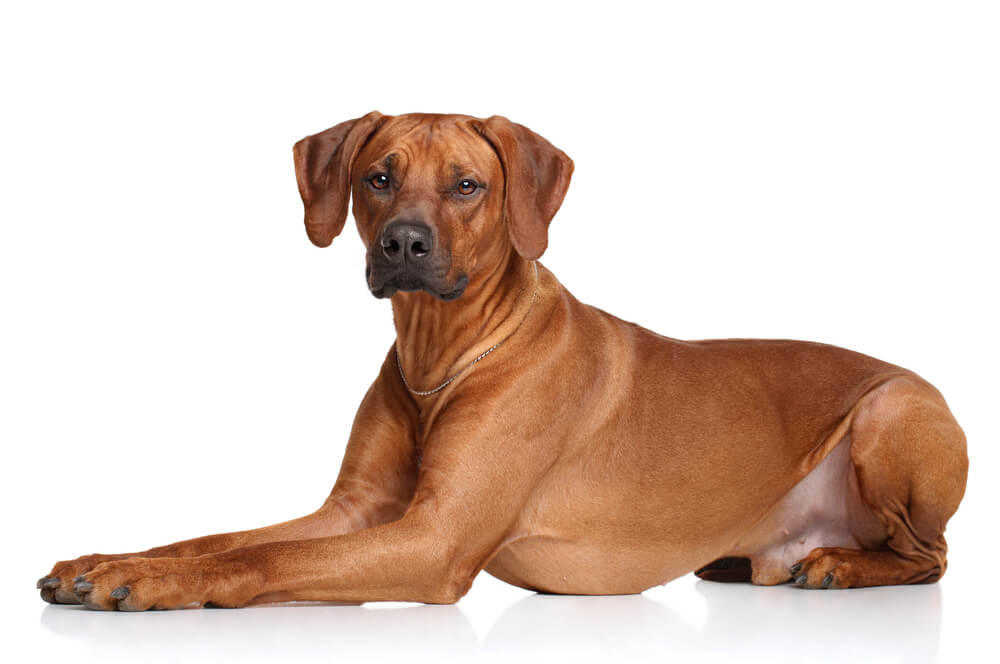
The sleek, smooth Rhodesian Ridgeback is South Africa's most popular dog breed, and was bred as an agile hunter and herder that is still often seen working in those capacities in their homeland today.
Interestingly, the first person to breed Rhodesian Ridgebacks in the United States was none other than Errol Flynn.
The swashbuckling superstar encountered the breed while filming in Africa and won multiple awards for his pups after the breed was accepted by the AKC.
Rhodesian Ridgebacks are quiet dogs who are patient with children and very loyal to their families.
They require minimal grooming, but their silky coat will usually shine brighter if they are brushed semi-regularly and given a diet that contains plenty of coat boosting nutrients like Omega 3 fatty acids and Vitamin B.
8. Borzoi
Another sleek hunting dog with the ability to thrive in harsh conditions - they originated in the colder parts of Russia and served royalty and gentry there for many years - the Borzoi is a calm, dignified dog who rarely barks and is generally well-behaved, sometimes to the point of appearing unusually aloof.
These dogs have smooth, sleek and silky coats that do not drop a lot of dander, except during the time, usually just once a year, when they will shed their old coat almost entirely to make way for the new one.
You can minimize the mess however, by having a groomer manually strip the old coat out, speeding up the shedding process.
Other than this a weekly brushing should be all that they require.
9. Great Dane
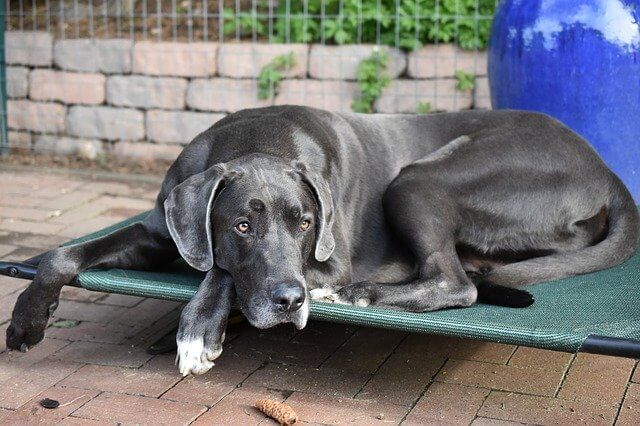
Great Danes are big - usually massive - and can be a little goofy - Scooby-Doo is actually a fairly good representation of his breed - but they don't bark a lot, and are in general very quiet dogs (unless they are solving mysteries, we suppose).
As a family dog, Great Danes are far more gentle than their large stature suggests they might be, and usually do well with older children and even cats.
They are also very loyal, and can be reasonably good guard dogs if called on to be.
In terms of their coat, the Great Dane has a short smooth coat that usually only molts once or twice a year.
Coat stripping can help keep loose dander in your home to a minimum at those times, but a weekly brushing is something that the affectionate Great Dane will enjoy while helping to keep his coat shiny and healthy looking.
10. Irish Setter
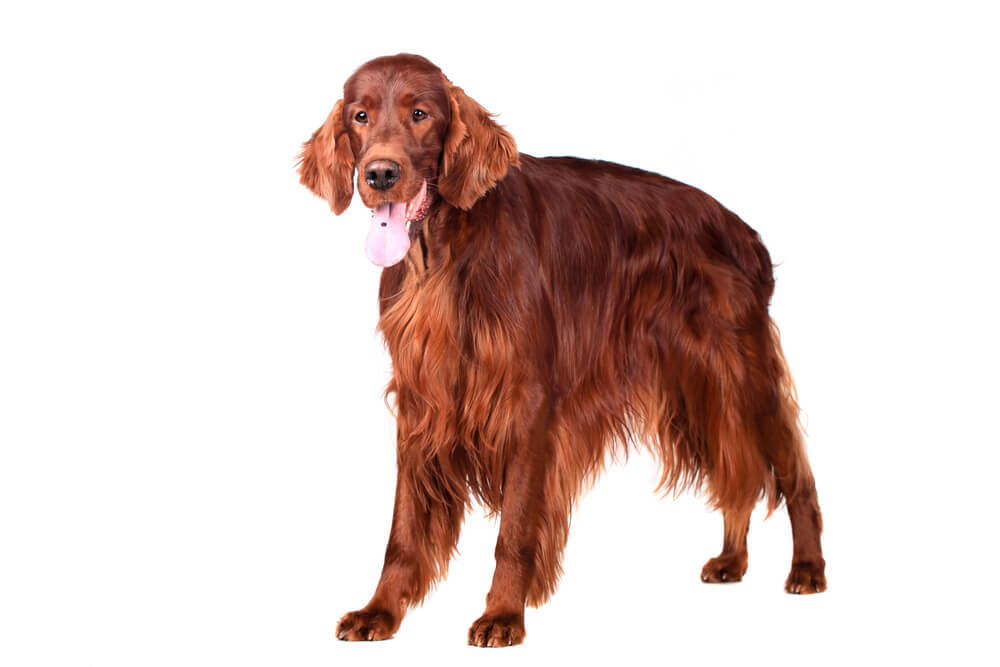
The Irish Setter is a lively, high-spirited pup that loves to be outside, running, jumping and generally being active, and makes a great walking, running or hiking companion for humans, as well as, given the right training, a successful canine athlete across a variety of dog sports.
However, as bright and energetic as they are, Irish Setters will rarely bark for no good reason and while they may be a little too lively to be around very small kids they fit in well with families with older children.
The Irish Setter is, of course, famed for its beautifully striking deep red coat, but that coat does not shed a great deal, far less than many other dogs of a similar size, and will do so even less if it gets the weekly grooming it should to help maintain its shine and keep it tangle free.
How To Get Any Large Dog To Bark Less
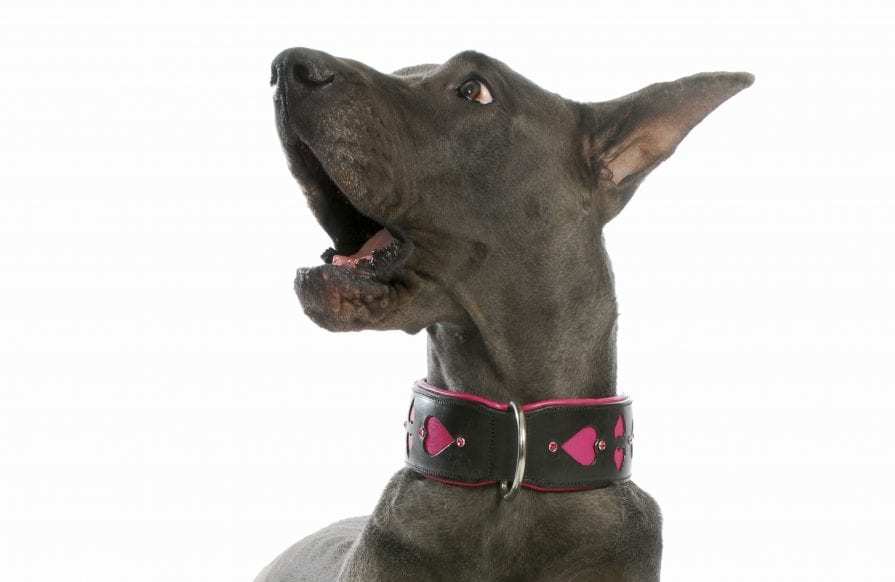
Keeping your dog busy and active will help limit barking and stop them from practicing it, whatever breed, age or size they are.
Although pups will not outgrow their tendency to bark, you can take proactive measures to lessen it and teach your dog alternate ways to communicate.
Barking can be a tremendously useful tool for figuring out what frightens or unnerves your dog.
As a pet parent, it is your responsibility to protect your dog from situations that would cause them undue stress.
Your pup may be trying to communicate with you by barking nonstop that they have an unmet demand or that they need to be taken out of a frightening or difficult circumstance, so learning to ‘listen’ to their barks is important!
However, there are, as we mentioned, steps you can take to break almost any dog of an excessive barking habit. It will take time, effort, practice, and consistency to train your dog to bark less.
While improvements won't be apparent right away, they will eventually be seen with the right approach and patience.
The one thing you should not do is shout at your pup to stop barking. That (might) work with human kids if they are shouting, (although that’s not an ideal method either) but it will not work with your dog.
Your dog will bark more as a result of your shouting because they believe you are engaging with them and joining in the game. The first rule therefore is to speak clearly and gently without shouting.
You should also choose a single word that your pup can learn to associate with your desire for him to stop barking. Quiet is always a good one.
Say "Quiet" in a firm, calm voice to your dog when he starts to bark. Wait until they stop barking before rewarding them with a treat.
They will eventually learn that they get a reward if they stop barking when they hear the word "quiet."
How to Stop a Dog Barking When Home Alone

One of the biggest problems pet parents have with their dog’s barking is when they do it when left alone. And as you are not there to use the ‘stop word’ it can be hard to figure out what you can do.
The key here is to try to remove as many of your pup’s barking triggers as possible, and to do your best to ensure they are amused and comfortable while alone.
This might mean leaving them in a room in your home that does not face any windows (so that passersby won’t trigger a barking fit) or at least closing the blinds/drapes so that they can’t see outside.
Puzzle toys can be very helpful when leaving a dog alone in general. Lots of dogs bark when they are bored, so having an engaging toy or two to play with will often help prevent that.
Leave on some background noise, either on the TV or via a smart assistant like a Google Home or Amazon Echo.
These smart devices both offer special apps that include calming sounds and/or ambient music pups enjoy (and are calmed by) and if you are leaving the TV on, something like DOGTV, which features content that is designed to fascinate your furry friend, can be very effective too.
Get a two-way camera. Some pet parents (most pet parents) are often as anxious about leaving their pup home alone as the dog is about being left, so choose to install a camera so they can keep an eye on them.
If you choose a two-way option, like the Furbo or the Wyze camera system you can talk to your pup too, and make use of that quiet command he’s worked so hard to learn if he starts barking when he shouldn’t (and the Furbo will even dispense a treat for him when he stops).
READ NEXT: 15 Dogs That Do Well Alone at Home
Top Image: via flickr/ferlinka

